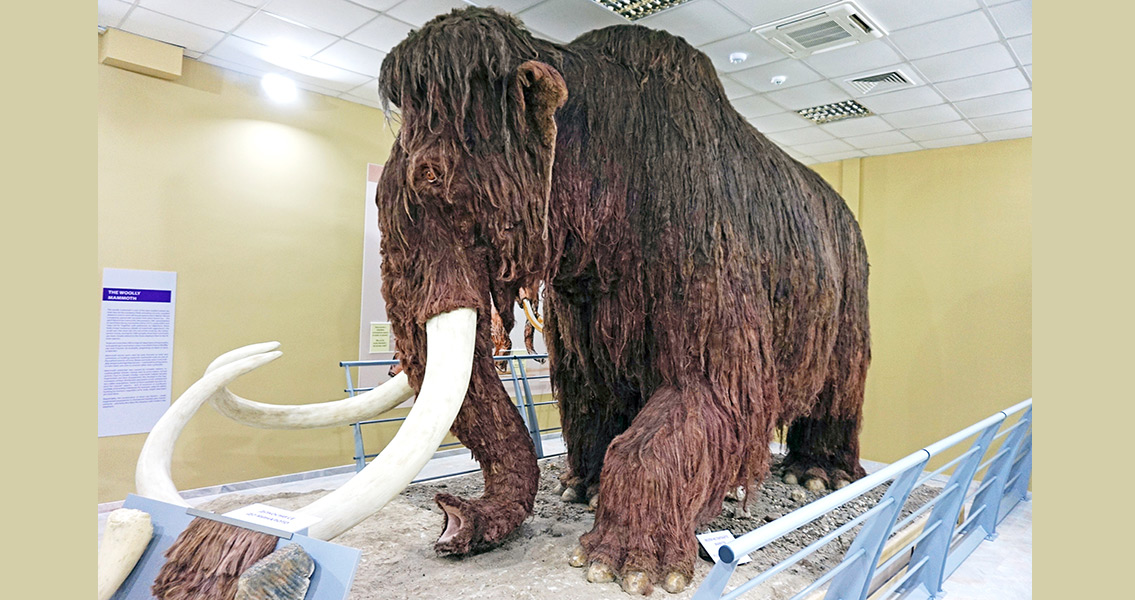<![CDATA[An international team of scientists have dated the extinction of woolly mammoths on St. Paul Island, Alaska, to 5,600 years ago. It is one of the most accurate datings of a prehistoric extinction ever made, according to the paper's authors. Dating a species' extinction from a region is a difficult task. Remains can be carbon dated, of course, but there is no way of knowing if other examples of the species lived in the region without leaving any remains. This exact problem faced researchers at St. Paul Island. Previous study had dated the remains of five individual mammoths to 6,480 years ago, but did other mammoths live on the island after them? To solve this question, a team of researchers led by Russel Graham, a professor of Geosciences from Penn State University, used a variety of proxies to date the extinction of the mammoths on St. Paul. Proxies are independent documents of an organism's presence. Not directly connected to the organism itself, they are instead examples of its imprint on the environment. For this study, the researchers looked for the spores of three different fungi that grew on the dung of large animals. The spores were extracted from lake cores and dated to determine when the last mammoths had lived on the island. "It's amazing that everything turned out so precisely with dating of extinction at 5,600 plus or minus 100 years," said Prof. Graham, in a press release. Located about 400 miles north of the Aleutian Islands, St. Paul Island was a part of the Bering land bridge until sea levels rose at the end of the last glacial period. Apart from mammoths, the only animals that lived on the island during prehistoric times were arctic foxes, shrews and polar bears - with no evidence of polar bears until 4,000 years ago. Humans did not arrive on the island until 1787 CE. Put simply, the only animals on the island large enough to attract the fungi spores to their dung were mammoths. "We see a reduction in the three species of fungus, all of which are associated with the dung of large animals," explained Graham. "These spores are a marker for the presence of large animals like mammoths." The proxies were found in sediment cores extracted from a lake on the island. Sediment DNA from the cores also showed the presence of mammoth DNA until 5,650 years ago (plus or minus eighty years). After that point there was no evidence of mammoth DNA, and therefore no mammoths were on the island. The youngest of the dated mammoth remains falls within the date range suggested by both the mammoth DNA and the fungal spores. "The St. Paul mammoth demise is now one of the best-dated prehistoric extinctions", the researchers report in the Proceedings of the National Academy of Sciences. Exactly what caused the extinction of woolly mammoths and other prehistoric megafauna is a major point of contention among scientists. Theories tend to focus on climate change, the actions of humans (for example hunting), or a combination of both. The researchers used environmental proxies to study how the habitat on St. Paul Island was changing at the time of the mammoths’ extinction. They found that the fate of mammoths on the island was different to those on the world’s continents, where mammoths went extinct around 12,000 years ago. Formed between 14,700 and 13,500 years ago, the island sank rapidly until 9,000 years ago, and continued to sink slowly until 6,000 years ago (at present it is just 42 square miles in area). As the island shrank the mammoths were concentrated into an ever decreasing area, and the available water started to run out. Pollen from the lake cores show that the area around the lake was denuded of vegetation by the mammoths. Much like modern elephants, the mammoths likely started to dig holes in search of water, increasing erosion and filling the lake with soil, in turn leaving even less water for drinking. Once the mammoths had gone extinct however, vegetation returned to the area and the erosion came to an end. Put simply, the mammoths had contributed to their own demise. Interestingly, the authors point out that this raises a fresh take on what can push a population to extinction. “(the research) highlights freshwater limitation as an overlooked extinction driver and underscores the vulnerability of small island populations to environmental change, even in the absence of human influence”. Image courtesy of Wikimedia Commons user: Tiia Monto]]>
Scientists Get Amazingly Accurate Date for Mammoth Extinction
